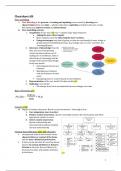Summary
Cheat Sheet for Summary of Adaptive Interactive Systems
- Course
- Institution
This cheat sheet is linked to the full summary of the course INFOMAIS, including the most important parts and highlighted page references to the full summary. Handy for the exam!
[Show more]



